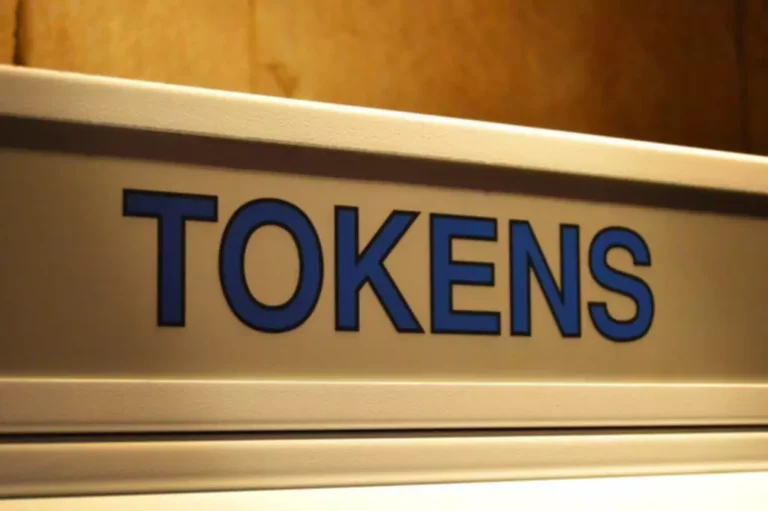Greatest Practices For Efficient Trade Execution J P Morgan Asset Management
The sudden surge in demand could drive the share value of the ETF sky-high, deviating from the actual worth of the underlying assets or its NAV. A extremely liquid asset can be purchased and sold shortly, in large amounts, and with out significantly impacting its market worth. Less liquid belongings might take longer to sell or require accepting a reduced price. There are many explanation why implied liquidity is a more accurate way to estimate an ETF’s liquidity than ADV alone. We think of implied liquidity as an estimate of the entire quantity of an ETF’s shares that could be created or redeemed on any given day with out materially impacting the least liquid safety within the ETF’s basket. Particularly in extremely liquid markets like U.S. large-cap shares, implied liquidity could also be considerably greater than the ETF’s ADV.

An authorized participant (AP) is a broker-dealer that has a contracted alternative with the ETF issuer to create and redeem shares within the main market to satisfy market demand. When it involves investing in exchange-traded funds (ETFs), buyers have a variety of choices to select from. One in style category of ETFs is liquidity ETFs, which offer quick access to extremely liquid assets. In this article, Benzinga takes a extra in-depth take a look at liquidity ETFs and what makes them unique.
Tips For Figuring Out Liquidity And Trading Etfs
Moreover, if an ETF invests in illiquid shares or uses leverage, the market price of the ETF could fall dramatically under the fund’s NAV. The dimension of an ETF measured by its property under management (AUM) likewise doesn’t essentially dictate its liquidity. Even ETFs with smaller AUM can have excessive liquidity if they observe a liquid index or sector and have energetic APs facilitating the creation and redemption process.

Investors can buy or promote ETF shares in the secondary market either on-exchange or over-the-counter (OTC). Only entities often recognized as Authorized Participants (APs) (also often recognized as Participating Dealers (PDs)) can entry the primary market to create and redeem shares. Through the industry-leading NYSE ETF Liquidity Program, ETF issuers can increase liquidity and enhance market high quality of their merchandise. Through continued innovation and enhancements, NYSE Arca continues to solidify its place as the leading itemizing venue and residential of ETFs.
Asset Class Capabilities
If they do select to interact within the main market this means that they might pay the cost of what the ETF portfolio supervisor requires to copy the index or investment strategy e.g., the underlying basket. The new enhancements to the NYSE ETF Liquidity Program have helped NYSE Arca solidify its place because the leading itemizing venue for ETFs. The ETF Capital Markets staff is focused on best-in-class execution and works with market makers, exchanges and different partners in the ETF ecosystem. The staff also works with the advisor group to answer questions and help advisors commerce ETFs with confidence.

Conversely, if some or all the underlying shares are illiquid—they are exhausting to purchase or promote without significantly affecting the price—the APs might face challenges in assembling or disassembling the hampers quickly. This delay could affect the timeliness and efficiency of the creation and redemption process, affecting the liquidity of the GreenTech ETF. Each ETF has a different liquidity profile, and it begins from how quickly and easily the underlying basket may be purchased and offered. It is necessary from an investor’s perspective that when selecting an ETF, the ETF issuer has a variety of LPs and APs with totally different skill sets and backgrounds for the funding vehicle to function as efficiently as potential. This support helps to reinforce liquidity, decreasing bid-ask spreads and thereby reducing the transaction cost of implementation to the investor. Liquidity providers give costs to the market for shares to be purchased or offered whether on an trade or bilaterally (directly) to the investor OTC.
Etfs With Wider Bid-ask Spreads Are Less Liquid
This would usually be more economical than paying the complete bid/ask cost of the underlying. This cost saving in turn will get handed back not directly etf liquidity to the secondary market in the form of tighter spreads. If it is not as cost efficient, they nonetheless have the first market out there to them.

Liquidity ETFs will not be suitable for all traders, especially those with a long-term funding horizon. These ETFs are designed for traders who need frequent entry to their money, and who’re willing to commerce off some potential returns for the flexibility to enter and exit the fund quickly. The services described on this web site are supposed to be made out there solely to individuals in the United States or as in any other case certified and permissible under native regulation. Create-to-lend desks create ETF shares (through an AP) for the aim of lending them to purchasers looking for to borrow the shares. While ETFs are generally listed on one change, buying and selling of ETF shares occurs across many buying and selling venues.
A narrower spread regularly signifies higher liquidity and decrease trading costs. Liquidity is among the most essential options of exchange-traded funds (ETFs), though https://www.xcritical.com/ frequently misunderstood. An ETF’s liquidity refers to how easily shares could be bought and sold without impacting the ETF’s market worth.
Prior to joining Capital, Donald worked as a senior ETF capital markets specialist at DWS Asset Management. An ETF issuer is a agency that creates, manages and operates an ETF, establishing its technique and working with regulators and exchanges to acquire permission to supply the fund. A basket is a group of securities that share certain themes or standards, such as being in the same sector, industry or funding technique.
Learn The Way Our Asset Allocation Committee Is Positioning Its Portfolios
This mechanism keeps ETF prices in between the bounds of transacting in the underlying basket. Let’s assume that the demand for an ETF exceeds the current number of shares outstanding. In that case, market makers by way of licensed members (APs) can go to ETF issuers like Capital Group to create more ETF shares to meet the demand. Even if the ETF has a relatively low ADV, more ETF shares can easily be created if the underlying basket is liquid. Conversely, if promoting in an ETF exceeds demand within the secondary market, the APs can redeem the shares again to the ETF issuer.
You want to have the power to buy and promote securities quick, simply, and at a beautiful cost. ETFs commerce like stocks, are topic to investment danger, fluctuate in market value and will trade at prices above or below the ETFs internet asset value. The information supplied doesn’t constitute investment advice and it should not be relied on as such.
Although ETFs have many traits that are just like stocks, liquidity isn’t considered one of them. Therefore, it‘s necessary to look beyond buying and selling volumes and on-screen indicators when assessing ETF liquidity. As with any financial security, not all ETFs have the same level of liquidity. An ETF’s liquidity is affected by the securities that it holds, the buying and selling volume of the securities held, the buying and selling volume of the ETF itself, and the funding environment. Understanding how these factors affect an ETF’s liquidity and, therefore, how its profitability will enhance results is especially necessary in environments where every cent counts. Whilst the primary market is at all times obtainable, LPs will normally solely interact within the primary market (directly as APs or indirectly by way of another AP) on a ‘last resort’ basis.
Visibly, buyers can see the primary layer of liquidity within the form of prices to buy and/or promote ETF shares on the exchange (known as average day by day buying and selling volume, ADV). However, very like an iceberg, there might be much more liquidity under the surface in the primary market by way of the creation and redemption course of. Perhaps the commonest ETF false impression is that funds with low every day trading volumes or with small quantities of assets beneath management will be tough or costly to trade. Liquidity ETFs are designed to offer traders with publicity to highly liquid property whereas offering the comfort of buying and selling on an trade. Unlike traditional mutual funds, ETFs trade on an exchange like particular person shares, making them easy to purchase and sell throughout the trading day. Investors with large ETF trades can also tap into major market liquidity by working with a certified participant to create or redeem ETF shares directly with the fund firm.
ETFs, however, are open-ended, meaning shares can be created and redeemed in what known as the primary market in response to demand in the marketplace. Yet, this is an oversimplification in relation to liquidity, or how quickly and easily a safety may be bought and offered in the secondary market. The mutual funds referred to in this website are supplied and bought solely to individuals residing in the United States and are supplied by prospectus solely. The prospectuses include funding goals, dangers, fees, expenses, and different data that you should read and contemplate rigorously earlier than investing.
It additionally explains why an ETF‘s liquidity is predominantly decided by the liquidity of its underlying particular person securities, somewhat than by the scale of its assets or by trading volumes. Typically, liquidity is larger through the market’s opening and closing, known as the market’s “rush hours,” due to larger trading volumes. During off-peak hours, for example, round lunchtime, liquidity may diminish, potentially leading to wider bid-ask spreads and fewer favorable costs for buyers.
A well-structured ETF with liquid underlying assets can higher adapt to market demand modifications, preserving honest costs and an efficient investor buying and selling expertise. The most common examples are stock exchanges like the NYSE and NASDAQ, however buying and selling on this market can occur across several exchanges and market maker trades. Investors additionally have to issue within the liquidity of the underlying securities that the ETF holds.
Overview
- Booking Price : $0
